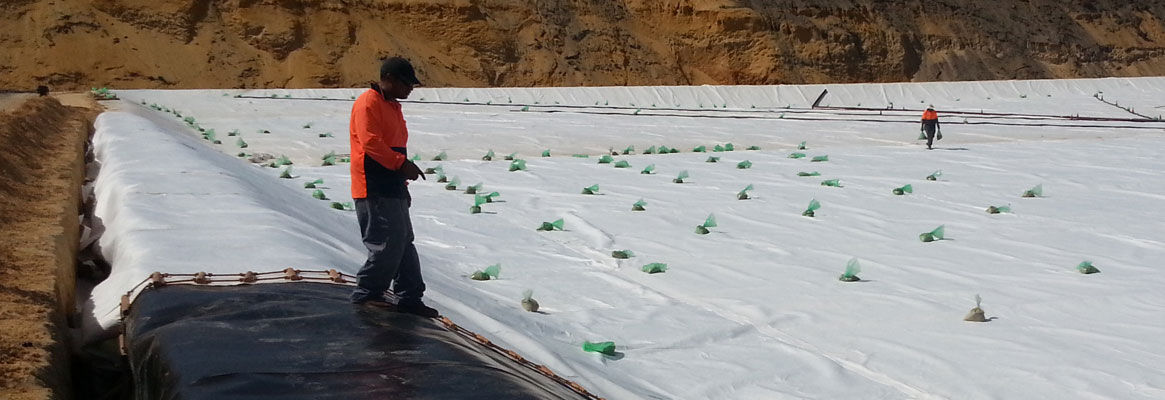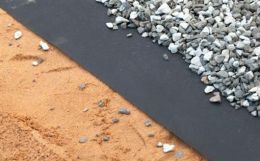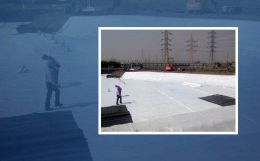Geotextiles are permeable fabrics which, when used inassociation with soil, have the ability to separate, filter, reinforce,protect, or drain.
A geotextile is a synthetic permeable textile material usedwith soil, rock, or any other geotechnical engineering related material.Geotextiles, also called geosynthetics, are generally associated withhigh-standard all-season roads, but can be used in low-standard logging roads.Geotextiles extend the service life of roads, increase their load-carryingcapacity.
Geotextiles should be considered for use on any section of road requiring anaggregate (rock) layer for surfacing. Geotextiles can reduce the amount ofaggregate required, thus reducing the cost of the road. For temporary roadconstruction in environmentally sensitive areas, a biodegradable woven jutegeotextile has been developed. This fabric will totally biodegrade after one totwo seasons, eliminating the need to remove a synthetic geotextile from underthe roadbed Hitkari Fibres Ltd. can provide help in selecting the correctmaterial for your specific situation.These products have a wide range of applications andare currently used to advantage in many civil engineering applicationsincluding roads, airfields, railroads, embankments, retaining structures,reservoirs, canals, dams, bank protection and coastal engineering.
They are manufactured from 100% continuous polyesterfilaments. Polyester is stable up to temperatures exceeding 250 degreescentigrade and is, therefore, unaffected by hot bitumen or asphalt.
In addition, it is passed through hot ovens, raised to 200 degrees centigradewhich 'pre shrinks' the fabric, enhancing its stability. The fabrics are usedto provide a water resistant layer, virtually eliminating surface waterinfiltration.
There are four primary uses of Geotextiles inroadway construction and maintenance:
- separation or stabilization
- drainage
- erosion control
- reinforcement
Separation or Stabilization:
Drainage/ Filtration: The geotextile acts as a filter through which water passes while it restricts fine-grained soil from entering into coarse-grained soil (sand or gravel). An example is in an underdrain where gravel-filled trenches lined with a geotextile fabric are constructed along the edges of roads. The fabric allows water to drain into the trench, while it permanently separates the different soil materials. The gravel remains clean and cannot "plug up" with fine material. Not only can it be used in roadways, but also under parking lots, walls, athletic fields, lawns, tennis courts, and other areas.
Erosion Control: A layer of heavy stones or broken rocks is commonly used to provide erosion protection for stream banks, culverts, ditches, stream channels, shorelines, and bridge structures. A geotextile placed between the rock layer and the underlying soil surface provides anchorage of the underlying soil and protects it from erosion and wave attack
Reinforcement: In some areas, construction is proposed in "soft" areas where the foundation soils are too weak to support a road or structure. Without sufficient reinforcement, the foundation cannot "hold up" the structure and it fails at considerable expense. The geotextile is subjected to a sustained tensile force or load. Soil and rock materials are noted for their ability to withstand compressive forces and their relative low capacity for sustained tensile forces. In much the same way that tensile forces are taken up by steel in a reinforced concrete beam, the geotextile supports tensile forces that cannot be carried by the soil in a soil-geotextile system.
PRIMARY USES FOR GEOMEMBRANES
Protection from leakages
Protection for linings
Basements
Bridge abutments and decks
Canals
Roof gardens
Service reservoirs
Tunnels
Retaining walls
To read more articles on Textile, Industry, Technical Textile, Dyes & Chemicals, Machinery, Fashion, Apparel, Technology, Retail, Leather, Footwear & Jewellery, Software and General please visit http://articles.fibre2fashion.com
To promote your company, product and services via promotional article, follow
this link: http://www.fibre2fashion.com/services/article-writing-service/content-promotion-services.asp








